|
Desert Crops
"Uninterrupted 10 years of Melisopalinological studies"
Melisopalinological characteristics of honeys from La Asunción (32º33'21''S / 68º14'45''W)
Lavalle, Mendoza, Argentina (1999-2009)
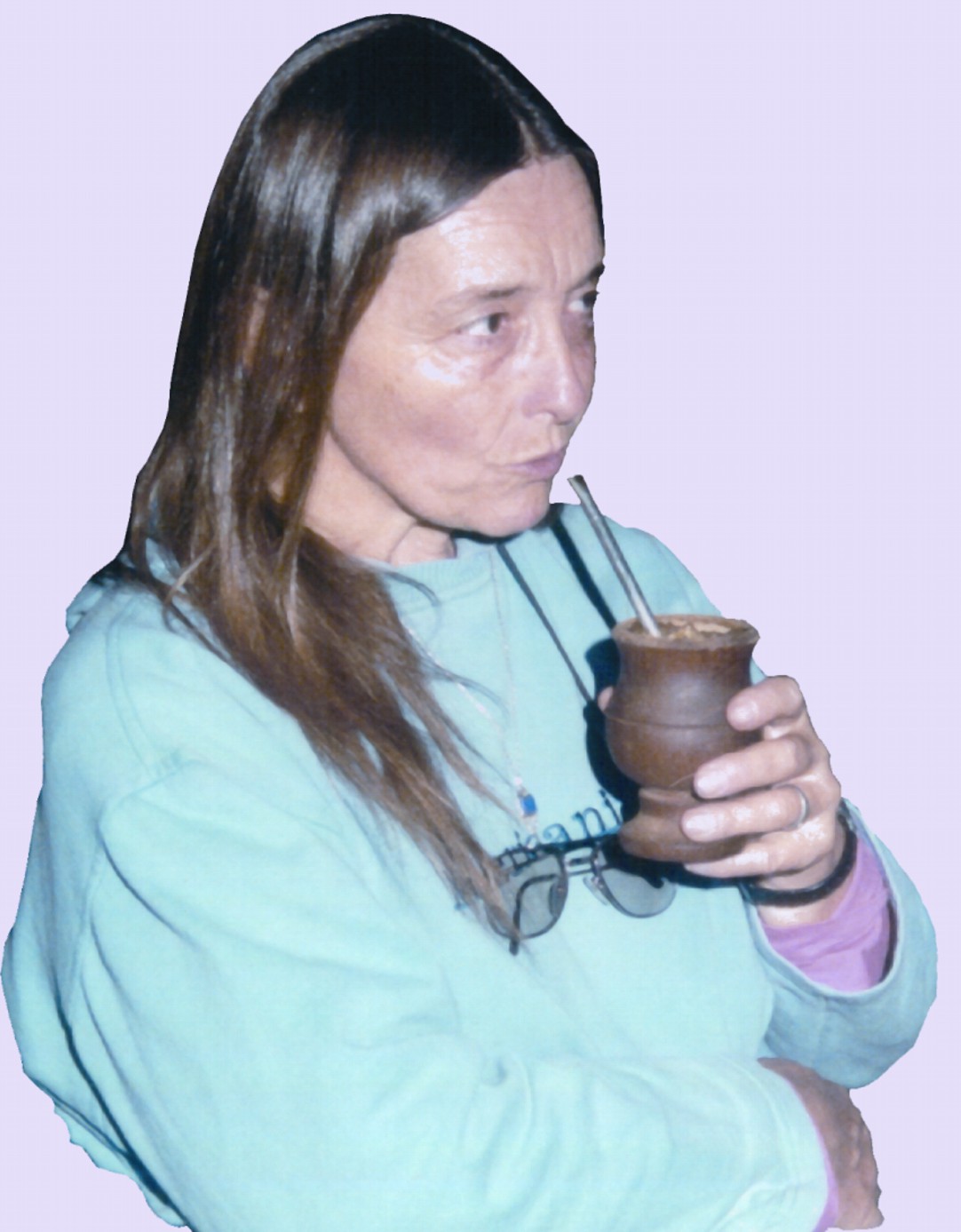
PhD Mónica Cristina Wingenroth
wingenro@lab.cricyt.edu.ar
Instituto Argentino de Nivología, Glaciología y Ciencias Ambientales - CCT - CONICET
ABSTRACT
With the collaboration of the technician Andrea Farrando and the beeekeeper Pedro Calderón, this paper deals with the contribution of pollen in the honeys of La Asunción, Lavalle, during 10 consecutive years. During said time, we tried to achieve the temporal sustainability of pollen input through proper beekeeping handling, trying to explain, at the same time, the causes of the observed variations. In terms of this handling, it was shown that it is possible to keep, during several consecutive seasons and within certain limits, the physico-chemical, organoleptic and microbiological characteristics of the honeys (except from atypical seasons because of weather or environmental inclemencies).
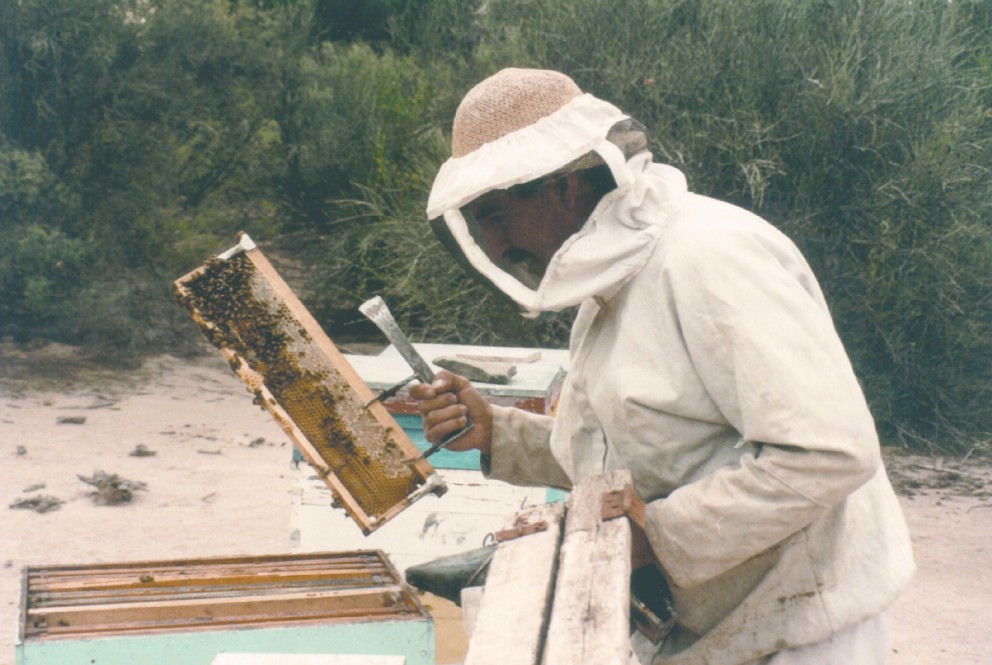
Pedro Calderón, looking for green Honey for the preliminary studies, also published in Espacio Apícola No. 48
The products made in this way retain regional characteristics constituing a scientific basis for advancing in their quality with designation of origin and have a qualitative advantage to be commercialized. What is important is the sustainability of the quality of the product, and this quality can even be divided into mono, bi or plurispecies honeys.
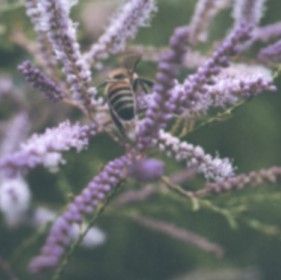
Tamarind blossoms (Tamarix
gallica)
In the honeys corresponding to the three selected intervales during all analyzed beekeeping seasons, it was always registered (except from some preparations) the presence of pollen from Capparis atamisquea, Prosopis pos. flexuosa y Tamarix gallica, varying only the pollen percentages.
Subtitles:
-INTRODUCTION
-LOCATION
-CLIMATE
-VEGETATION
-POLLEN
-MATERIALS Y METHODS
-PROGRESS IN APPLIED METHODOLOGY
-PARTIALLY ADOPTED METHODOLOGY
-LANGUAGE EVALUATIONS
-RESULTS, ANALYSIS AND DISCUSSION
-FIRST INTERVAL OCTOBER - DECEMBER
-SECOND INTERVAL DECEMBER - JANUARY
-THIRD INTERVAL JANUARY - MARCH
-COMMON FEATURES IN THE THREE INTERVALS
-ENVIRONMENTAL AND ANTHROPIC FACTORS
-CONCLUSSIONS
To top
Handling and Bees under Agricultural and Weather Pressure III
Ricardo Miguel Prieto
Junín - Buenos Aires - Argentina
prieto@infovia.com.ar

Feeding Beehives in brood chamber and super
I wanted to separate the comments on the handlings that accompany the feeding handling that was discussed in the last edition, considering that feeding is nowadays "THE handling" par excellence, the key that allows us to go on practising beekeeping, at least to those beekeepers who do not usually make transhumance. The feeding after crop is perhaps more importante than spring feeding, since this last one does not avoid winter mortality, and with a good feeding during autumn, post - crop feeding hardly needs spring one. Here they are pushibled reflections, pieces of advice and experience on some other handlings, oriented to facilitate and adapt beekeeper's job to the current situation of our apiaries. It is important to mention that not any sugar syrup can be given to bees, since their digestive apparatus is very simple and lacks the abitility to assimilate some complex sugars called "dextrins"
Subtitles:
- OTHER HANDLINGS
- QUANTITY OF BEEHIVES PER APIARY
- TIMES OF CARE AND QUANTITY OF BEEHIVES PER BEEKEEPER
- SYRUPS: Qualities
- QUEEN CHANGES
- MARKING THE BEEHIVE WITH COLOUR PINS
- DOUBLE QUEENS
- CURES
- NUCLEOUS
- HOW MUCH DO BROOD CHAMBERS WEIGH?
To top
The Beekeeping Company under Agricultural and Weather Pressure
"Production circuit of Dual Purpose Sowing and Polination Services"
Héctor Suriak y Luis Diez
Venado Truerto - Santa Fe - Argentina

"Optimizing Costs" Variables to have into account: Manpower, Beehives, vehicles, tools.
Luis Diez and Héctor Suriak approached the current beekeeping problems from a purely business perspective during the "XVIIth Fair and Beekeeping Meeting from the Centre of the Country", which took place last May in Río Cuarto, Córdoba. After having tried to make a producer association or partnership, from Héctor's experience inside groups of "Cambio Rural", in the south of Santa Fe; they showed their association's progress, their current performance and how they face the challenges that are posed by the expansion of adverse agricultural systems, the weather variables, and the oversizing of the bureaucratic structure, current legislation and public administration. We submit to our reader a summary of the lecture given by Luis Diez and Héctor Suriak, which certainly fosters discussion.
Subtitles:
- BEEKEEPING AT SCALE
- CONCEPT OF COMPANY
- HOW WE ORGANIZE OURSELVES
- ADDRESS THE LACK OF FIELD
- PRODUCTION GOALS
- PERSONAL
- LAND-AND-CATTLE INTEGRATION
- BUSINESS MANAGEMENT
To top
|

 ARGENTINE BEEKEEPING MAGAZINE
ARGENTINE BEEKEEPING MAGAZINE






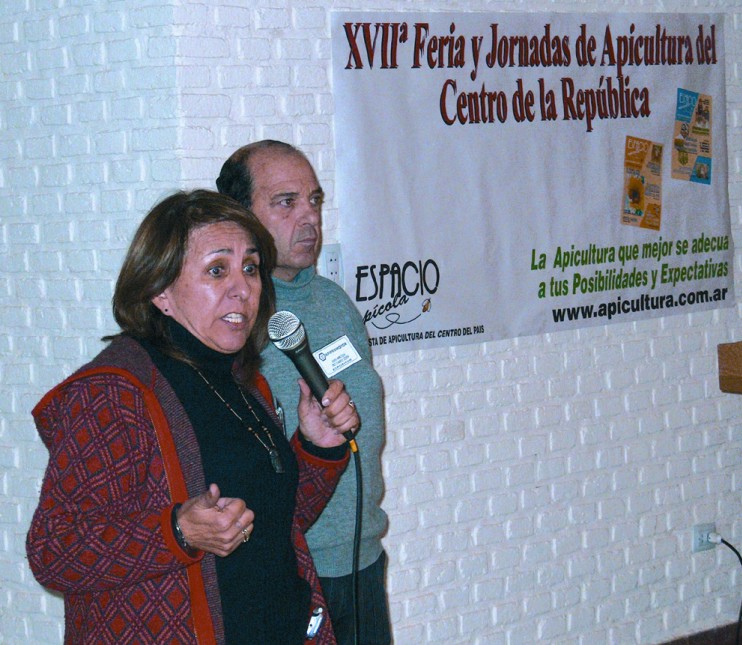
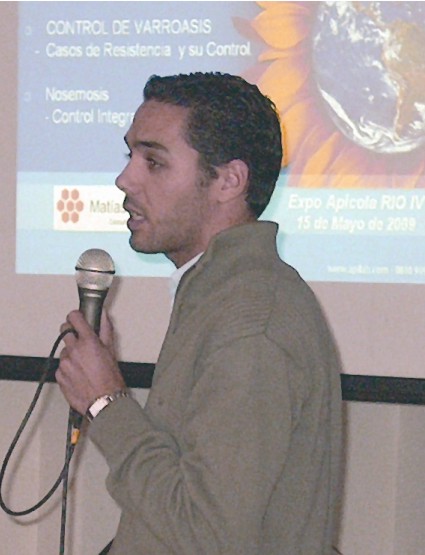
 inform@apicultura.com.ar
inform@apicultura.com.ar